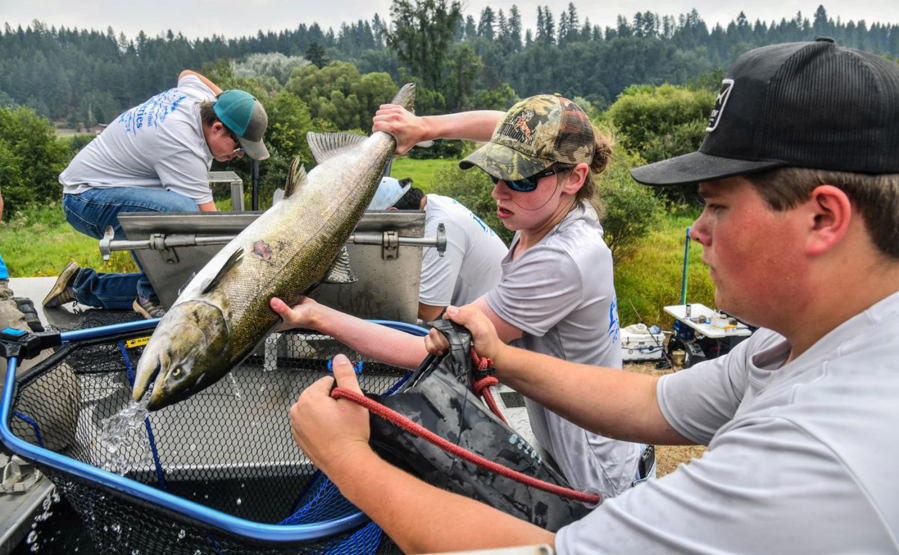SPOKANE — For the first time in 111 years, summer chinook are swimming in the Little Spokane River.
Fifty-one of them, to be precise.
The adult fish were released into the river, near the Waikiki Spring trailhead, last Friday by the Spokane Tribe of Indians, alongside the Washington Department of Fish and Wildlife and the Inland Northwest Land Conservancy.
And while the release was modest and aimed at education and honoring a culture, it continues to set the stage for long-lasting and sustainable reintroduction of salmon into the Upper Columbia River, a watershed rife with habitat but long blocked by two of America’s largest dams: Grand Coulee and Chief Joseph.
That habitat includes the Little Spokane River, a river once so abundant with salmon that one European explorer described the fish as “thick as crickets” during an 1883 trip through the Northwest.
Roughly 80 people attended the release ceremony last Friday. Representatives from the tribe, WDFW and the land conservancy all spoke.
Then the adult chinook salmon — ranging from 7 to 18 pounds — were netted; placed in large, rubber boot-like containers; passed hand-over-hand down the embankment; and released into the 60-degree water. As the first one splashed down in a whirl of whitewater, the crowd cheered and whooped.
The fish were brought by truck from the Wells Salmon Hatchery, near Chelan, where all were tested for various diseases.
“Salmon, for us, it’s kind of a spiritual experience,” said Monica Tonasket, a Spokane Tribal councilwoman. “Those salmon have a spirit.”
Tonasket’s grandfather was forced from his home when Grand Coulee Dam was built, she said. He lived his entire adult life without salmon.
“For me to be able to stand here today and know that I’m making my grandparents, my ancestors proud, I’m overwhelmed,” she said. “I’m just overwhelmed.”
Phase 2 of reintroduction
Some of the salmon released last Friday are tagged with radio transmitters, which will allow tribal biologists to track the fish in real time, said Conor Giorgi, the anadromous program manager for the Spokane Tribe of Indians. That information will be used to help design and dial in the next phase of the reintroduction effort.
Tribal biologists expect the salmon to spawn and build redds (gravelly nests in which female salmon lay their eggs) much like they did in the Sanpoil River following similar cultural releases.
“A lot of folks don’t remember that this was a world-class salmon stream,” Giorgi said.
Since 2015, the Upper Columbia United Tribes — which include the Coeur d’Alene Tribe of Indians, Confederated Tribes of the Colville Reservation, Kalispel Tribe of Indians, Kootenai Tribe of Idaho and Spokane Tribe of Indians — have been working to sustainably reintroduce salmon into the blocked regions of the Columbia River.
In 2019, Phase 1 of that work wrapped and found, among other things, that there are 711 miles of possible habitat for spring chinook and 1,610 miles for summer steelhead.
Now, the tribes are entering Phase 2, which will introduce tagged salmon into the system to test the habitat and survivability estimates developed in Phase 1. Phase 2 will examine the best method for getting fish up and over the Grand Coulee and Chief Joseph dams. All of that should take at least five years, according to tribal biologists.
A key step in that process will be the release of 750 yearling chinook in 2022. Each will be tagged with a passive acoustic tracker that pings stationary receivers as the fish make their way downstream.



